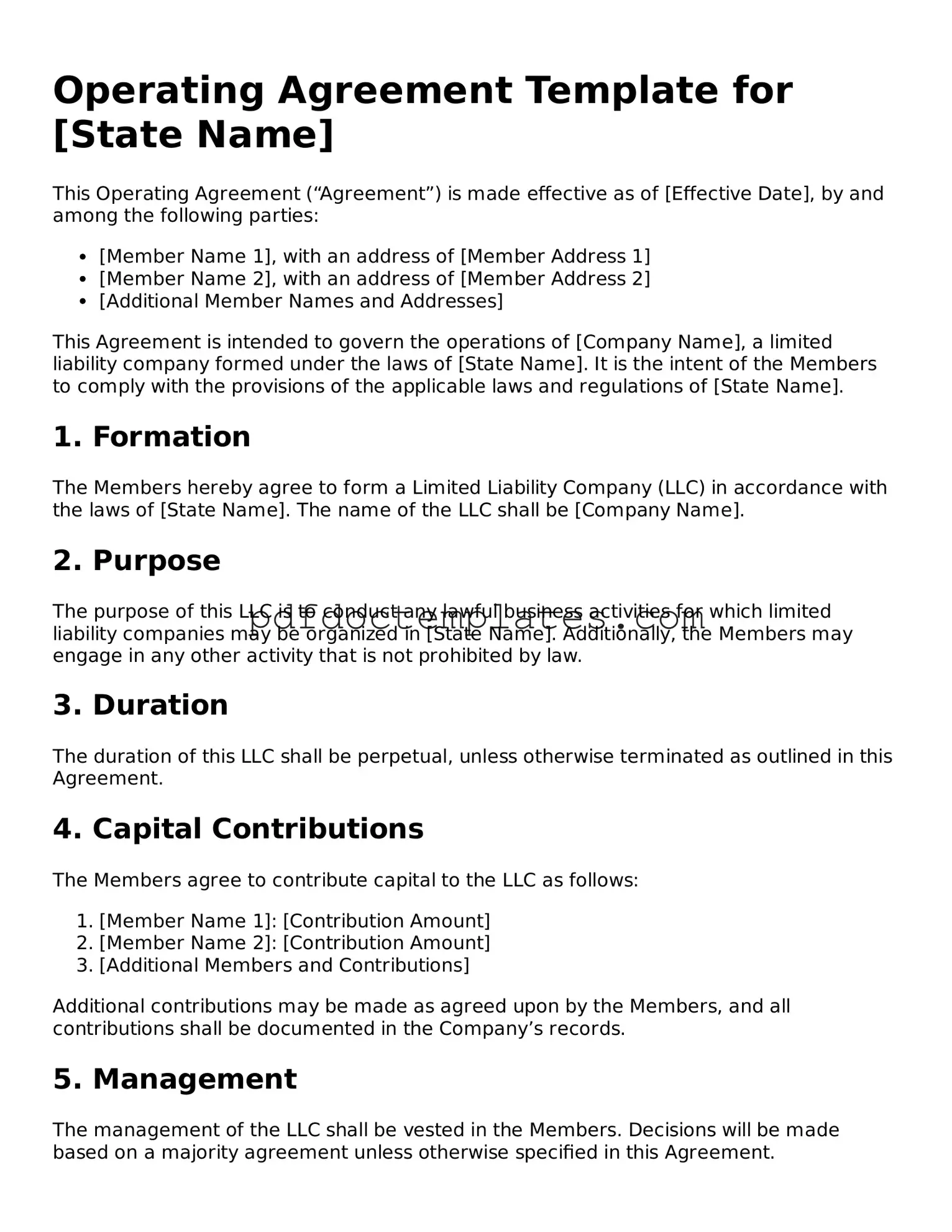Operating Agreement Template for [State Name]
This Operating Agreement (“Agreement”) is made effective as of [Effective Date], by and among the following parties:
- [Member Name 1], with an address of [Member Address 1]
- [Member Name 2], with an address of [Member Address 2]
- [Additional Member Names and Addresses]
This Agreement is intended to govern the operations of [Company Name], a limited liability company formed under the laws of [State Name]. It is the intent of the Members to comply with the provisions of the applicable laws and regulations of [State Name].
1. Formation
The Members hereby agree to form a Limited Liability Company (LLC) in accordance with the laws of [State Name]. The name of the LLC shall be [Company Name].
2. Purpose
The purpose of this LLC is to conduct any lawful business activities for which limited liability companies may be organized in [State Name]. Additionally, the Members may engage in any other activity that is not prohibited by law.
3. Duration
The duration of this LLC shall be perpetual, unless otherwise terminated as outlined in this Agreement.
4. Capital Contributions
The Members agree to contribute capital to the LLC as follows:
- [Member Name 1]: [Contribution Amount]
- [Member Name 2]: [Contribution Amount]
- [Additional Members and Contributions]
Additional contributions may be made as agreed upon by the Members, and all contributions shall be documented in the Company’s records.
5. Management
The management of the LLC shall be vested in the Members. Decisions will be made based on a majority agreement unless otherwise specified in this Agreement.
6. Profits and Losses
Profits and losses shall be allocated to Members as follows:
- [Member Name 1]: [Percentage or Amount]
- [Member Name 2]: [Percentage or Amount]
- [Additional Members and Allocations]
7. Meetings
Meetings of the Members shall be held at least annually and can be called by any Member. Notice of such meetings shall be provided at least [Number] days in advance.
8. Indemnification
The LLC shall indemnify the Members to the fullest extent allowable under the laws of [State Name], subject to any limitations prescribed therein.
9. Amendments
This Agreement may be amended only by written agreement signed by all Members.
10. Governing Law
This Agreement shall be governed by and construed in accordance with the laws of the State of [State Name].
IN WITNESS WHEREOF, the Members have executed this Operating Agreement as of the date first above written.
[Signature of Member 1]
[Signature of Member 2]
[Additional Member Signatures]
